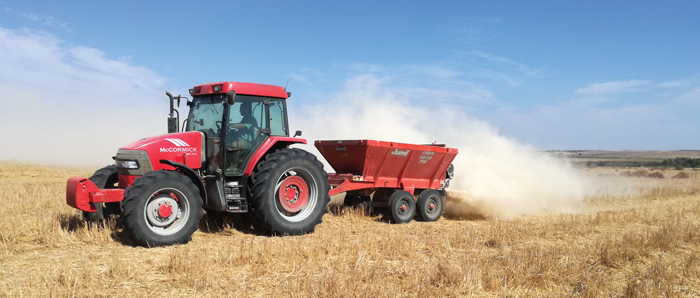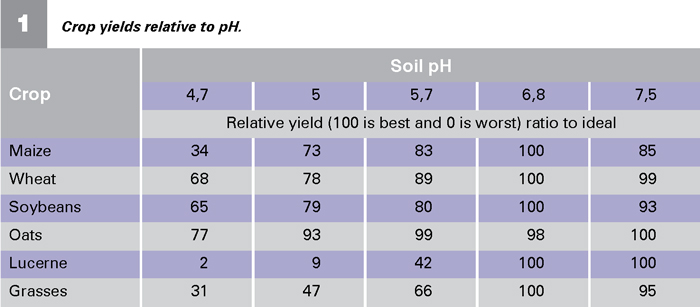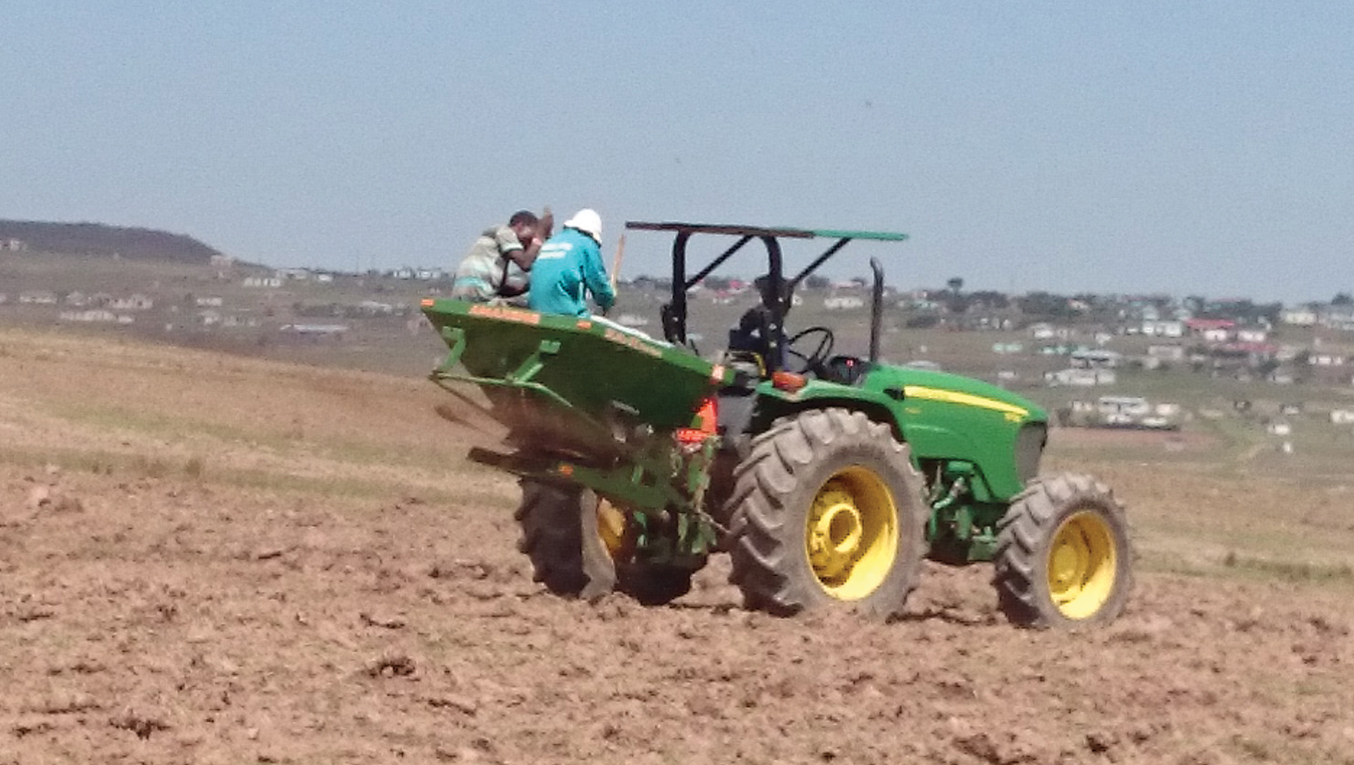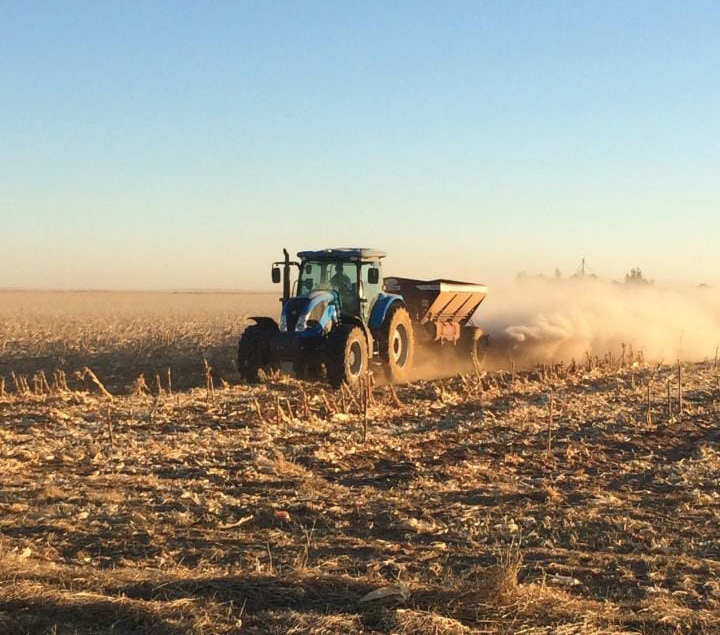December 2020
| Richard McPherson, Pula Imvula contributor. Send an email to richard@agrimetrix.co.za |  |
We have had a look at soil fertility, managing your crops and crop rotations in a production system to build humus, the main plant nutrients held by the sand clay and loam colloid and enhancing the complex soil microbes together with the application of fertilisers in previous Pula Imvula articles. Please refer to these to refresh and improve your knowledge base.
An important aspect of growing commercial crops on your soil is to know and understand what the pH or acidity level of the soils is, in the various soil types, occurring on your farm by measuring them when doing soil testing or prior to planning a comprehensive liming programme. If they are extremely acid or alkaline then the soil can be ‘corrected’ by applying various compounds including calcitic or dolomitic lime in a carefully planned short, medium and long-term application programme to each land in turn.
If your high potential and deepest soils are very acid you might be missing out on obtaining the highest crop yields in optimum rainfall years. Adding a ton or more of maize yield per year over many years can amount to a considerable increase in income and thus economic sustainability in future years. At a value of R2 500 per ton over five years this would be R12 500.
 Photo: Jenny Mathews
Photo: Jenny MathewsDelaying the analysis of a potential acidity problem and the implementation of a properly planned liming programme can be very costly especially when profitable crop production demands high yields. The direct costs for maize depending on the yield target or potential of the soils under consideration can cover a range of R7 000 to R10 000 per hectare for dryland production. This implies that a yield of 2,8 t/ha to 4 t/ha is required to cover the direct costs per hectare. Any yields over this will go towards your fixed costs such as bond repayments, land lease payments, rental, electricity as defined by your accounting methods and programmes. It is vital to assess your yield potential from detailed farm records. Most farmers over-estimate their actual long-term yields when doing their gross margin analysis.
UNDERSTANDING PH
pH can be measured in a water medium or in a chemical buffer medium of water and calcium chloride. Be sure to know which one you are using. The range of pH and ideal plant growth and pH (CaCl2) is shown in Figure 1.

Table 1 gives an indication of the potential yield to an ideal soil pH reading. For example, if you are planting maize in a land that has a pH of 4,7 compared to a pH of 6,8 you might only realise 34% of the possible maximum yield for that soil. In the deep but extremely acid soils in KwaZulu-Natal yields have been increased from 2,5 t/ha to over 8 t/ha by correcting the soil pH through a long-term liming programme. This might take several applications amounting to between five and seven tons of the recommendation of calcitic or dolomitic lime. Dolomitic lime containing magnesium is recommended when the calcium to magnesium ratio in your soils needs correcting as well.

These are general observations that indicate trends. Each farmer would get a feel for what are the ideal applications and results of lime applications on his own soils over many years. The general rule of thumb is that a particular application of lime reacts in the soil colloidal complex over about three seasons to affect the planned for change in pH desired. Seasonal tests in your lands will show the progress being made towards an ideal pH of 6,8. Increasing crop yields realised will also indicate the effectiveness of the current liming programme.
In considering total cation exchange capacity (CEC) your test might come back showing an acid saturation of 30% to 40% which is a very acid soil. In simple terms this means that 30% to 40% of the spaces, in the soil colloidal medium, to hold the major nutrients such as potassium, sulphur, and calcium are taken up by hydrogen ions. The soil is thus not able to hold or keep the nutrients required to enable the crops grown to achieve maximum yields. Liming will improve the ability of the soil to retain nutrients that the plants can access over the vegetative and seed forming stages.

Making a plan – applying lime with a fertiliser spreader.
Photo: Jenny Mathews
SOIL CORRECTION PLAN OR STRATEGY
A total soil correction strategy might involve the application of calcitic or dolomitic lime to improve pH, gypsum to balance sulphur, MAP to improve phosphate status and KCL to correct the potassium status. If applied by a contractor this recipe might cost between R1 850 and R2 500 per hectare. This might be a bridge to far for some farmers and the ideal soil will rather be created over several years.
Considering only liming, the costs depending on the farm’s distance from the lime source could range for delivered product from R600 to R700 per ton with and an application cost of R200/ha for farmers using contractors. KwaZulu-Natal farmers in the main apply the lime with their own equipment.
Work out your costs of a liming programme, together with an agronomist you are comfortable with, and weigh up this cost against the estimated financial gains from the increased yields over several seasons. Start with your highest potential soils and plan to correct each land on the farm in turn over several years to spread the financial cost and risk to you farming business.
CONCLUSION
Experienced farmers, agronomists, fertiliser agents, consultants, and other experts in the field are of the opinion that ‘liming works’. But consider the financial implications and risk before launching into a full liming programme. Do it systematically for every high potential land on your farm. Those farmers that have access to grant funds should use any opportunity offered, as soon as practically possible, to apply lime as a start to creating an ideal soil that will ensure higher yields into the future.

Lime spreading.
Photo: Jenny Mathews
Publication: December 2020
Section: Pula/Imvula